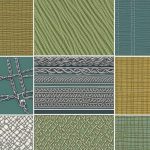Types Of Shapes
Shapes are an essential part of geometry, which is a branch of mathematics that deals with the study of spatial relationships and properties. Geometric shapes are the fundamental building blocks of geometry, and they are classified based on their properties. Understanding the different types of shapes is crucial in solving geometric problems and also has practical applications in everyday life.
Basic geometric shapes include two-dimensional (2D) shapes such as circles, triangles, squares, rectangles, and polygons, and three-dimensional (3D) shapes such as cubes, spheres, cones, and cylinders. These shapes have unique properties that make them distinct from each other, such as the number of sides, angles, and vertices. Properties of shapes include their size, area, perimeter, volume, and surface area, among others.
In addition to basic geometric shapes, there are also complex geometric shapes that are made up of several basic shapes. These shapes are more challenging to classify and describe, and they require a deeper understanding of geometry. Understanding the properties and classification of shapes is essential in solving real-life problems such as designing buildings, creating art, and even in sports such as soccer.
Basic Geometric Shapes

Geometry is the branch of mathematics that deals with the study of shapes, sizes, positions, and dimensions of objects. Shapes are the fundamental building blocks of geometry. There are two types of shapes: two-dimensional and three-dimensional. Two-dimensional shapes are flat and have only two dimensions, while three-dimensional shapes have three dimensions and are solid.
Two-Dimensional Shapes
Two-dimensional shapes are also known as plane shapes. They are flat and have only two dimensions: length and width. Some of the most common two-dimensional shapes are squares, triangles, circles, and rectangles.
Square
A square is a four-sided figure with equal sides and equal angles. All sides of a square are perpendicular to each other, and each angle measures 90 degrees. Squares are used in many areas of mathematics, including geometry, algebra, and trigonometry.
Triangle
A triangle is a three-sided polygon with three angles. Triangles can be classified into three types based on their angles: acute, obtuse, and right. An acute triangle has all angles less than 90 degrees, an obtuse triangle has one angle greater than 90 degrees, and a right triangle has one angle equal to 90 degrees.
Circle
A circle is a two-dimensional shape with a curved boundary that is made up of points that are equidistant from a fixed point called the center. The distance from the center to any point on the circle is called the radius, while the distance across the circle through the center is called the diameter.
Rectangle
A rectangle is a four-sided shape with two pairs of parallel sides and four right angles. The opposite sides of a rectangle are equal in length, and the diagonals bisect each other.
Three-Dimensional Shapes
Three-dimensional shapes are also known as solid shapes. They have three dimensions: length, width, and height. Some of the most common three-dimensional shapes are cubes, spheres, pyramids, and cylinders.
Cube
A cube is a three-dimensional shape with six square faces of equal size. All edges of a cube are equal in length, and all angles are right angles.
Sphere
A sphere is a three-dimensional shape that is perfectly round in shape, like a ball. The surface of a sphere is made up of points that are equidistant from a fixed point called the center.
Pyramid
A pyramid is a three-dimensional shape with a polygonal base and triangular faces that meet at a common vertex. The number of faces, edges, and vertices of a pyramid depend on the shape of its base.
Cylinder
A cylinder is a three-dimensional shape that has two parallel circular bases connected by a curved surface. The radius of the circular base and the height of the cylinder determine its volume.
In conclusion, basic geometric shapes are the foundation of geometry. Understanding the properties and characteristics of shapes is important in many fields, including mathematics, engineering, and architecture.
Properties of Shapes
Shapes come in different forms and sizes, and they all have unique properties that define them. This section will discuss the properties of shapes, including their sides and edges, angles and points, and faces and vertices.
Sides and Edges
The sides and edges of a shape refer to the straight lines that make up its boundary. The number of sides and edges a shape has will depend on its type. For instance, a triangle has three sides and three edges, while a square has four sides and four edges.
Angles and Points
Angles and points are also important properties of shapes. An angle is formed by two intersecting lines, while a point is a specific location on the shape. The interior angles of a shape are the angles formed inside the shape, while the exterior angles are the angles formed outside the shape.
Faces and Vertices
A face is a flat surface of a shape, while a vertex is a point where two or more edges meet. A cube, for example, has six faces and eight vertices. The number of faces and vertices a shape has will depend on its type and dimensions.
In addition to these properties, shapes also have other defining characteristics, such as their area, base, height, and corners. Understanding these properties is essential in geometry and can help in solving mathematical problems related to shapes.
Overall, the properties of shapes are what make them unique and distinguishable from one another. By understanding these properties, one can better appreciate the beauty and complexity of shapes and their role in mathematics and the world around us.
Complex Geometric Shapes
When it comes to geometry, there are many shapes that fall under the category of “complex.” These shapes can be broken down into two main categories: polygons and non-polygonal shapes.
Polygons
Polygons are shapes that have straight sides and angles. They can be further classified based on the number of sides they have. Some of the most common polygons are:
- Triangle: a polygon with three sides and three angles.
- Quadrilateral: a polygon with four sides and four angles. This includes shapes such as squares, rectangles, rhombuses, parallelograms, trapeziums, and kites.
- Pentagon: a polygon with five sides and five angles.
- Hexagon: a polygon with six sides and six angles.
- Octagon: a polygon with eight sides and eight angles.
Non-Polygonal Shapes
Non-polygonal shapes are those that do not have straight sides and angles. Some of the most common non-polygonal shapes are:
- Oval: a shape that is elongated and curved, resembling an egg or an ellipse.
- Cube: a three-dimensional shape with six square faces.
- Sphere: a three-dimensional shape that is perfectly round, like a ball.
- Cylinder: a three-dimensional shape with two circular faces and a curved surface.
- Cone: a three-dimensional shape with a circular base and a curved surface that tapers to a point.
- Pyramid: a three-dimensional shape with a polygonal base and triangular faces that meet at a common point.
- Hemisphere: a three-dimensional shape that is half of a sphere.
- Globe: a three-dimensional shape that represents the Earth.
- Cuboid: a three-dimensional shape with six rectangular faces.
- Rectangular Prism: a three-dimensional shape with two rectangular faces and four rectangular sides.
In summary, complex geometric shapes can be divided into polygons and non-polygonal shapes. Polygons have straight sides and angles, while non-polygonal shapes do not. Understanding the different types of complex geometric shapes can be useful in a variety of fields, from architecture to engineering to art.
Shape Classification
Shapes can be classified based on their dimension, symmetry, and complexity. This section will cover the different ways shapes can be classified.
By Dimension
Shapes can be classified as either two-dimensional (2D) or three-dimensional (3D). 2D shapes are flat and have only two dimensions, length and width. Examples of 2D shapes include squares, rectangles, triangles, and circles. On the other hand, 3D shapes have three dimensions, length, width, and height. Examples of 3D shapes include cubes, spheres, pyramids, and cylinders.
By Symmetry
Shapes can also be classified based on their symmetry. A shape is said to be symmetrical if one half of the shape is a mirror image of the other half. Shapes can be classified as either symmetric or asymmetric. Symmetric shapes are those that can be divided into two identical halves. Examples of symmetric shapes include squares, circles, and triangles. Asymmetric shapes, on the other hand, do not have any line of symmetry. Examples of asymmetric shapes include clouds and mountains.
By Complexity
Shapes can also be classified based on their complexity. Shapes can be classified as either uni, bi, tri, or quadrilateral based on the number of sides they have. Uni shapes have only one side, such as a circle. Bi shapes have two sides, such as a line segment. Tri shapes have three sides, such as a triangle. Quadrilateral shapes have four sides, such as a square or rectangle. Shapes can also be classified as open or closed. Closed shapes are those that have no gaps or openings, such as a square or circle. Open shapes, on the other hand, have gaps or openings, such as a crescent or heart.
Shapes can also be classified based on their structure or form. Shapes with curved lines are called curvilinear shapes, while shapes with straight lines are called rectilinear shapes. Examples of curvilinear shapes include circles and ovals, while examples of rectilinear shapes include squares and rectangles.
In summary, shapes can be classified based on their dimension, symmetry, and complexity. Understanding the different ways shapes can be classified can help individuals identify and distinguish between different shapes.
Shapes in Real Life
Shapes are all around us, from the books we read to the objects we use every day. They come in different sizes, dimensions, forms, and structures. One of the most common shapes is the circle, which is round and has a constant radius. Circles can be found in everyday life, from the wheels on a car to the buttons on a shirt.
Another common shape is the square, which has equal length and width. Squares can be found in many objects, such as dice, book covers, and picture frames. They are also used in architecture and construction to create stable structures.
Triangles are another type of shape that can be found in everyday life. They have three sides and can be equilateral, isosceles, or scalene. Triangles are commonly used in architecture, engineering, and mathematics to calculate angles and distances.
Rectangles are similar to squares, but they have different lengths and widths. They are commonly found in book covers, picture frames, and computer screens. They are also used in architecture and construction to create stable structures.
Other shapes that can be found in everyday life include cylinders, cones, and pyramids. Cylinders are round and have a constant radius and height. They are commonly used in containers such as soda cans and water bottles. Cones are similar to cylinders, but they have a pointed end. They are commonly used in traffic cones and ice cream cones. Pyramids are three-dimensional shapes with a base and triangular sides that meet at a point. They are commonly used in architecture and construction to create stable structures.
In conclusion, shapes are an essential part of our daily lives. They come in different forms and structures and have various uses in everyday objects, books, articles, and geometry. Understanding the different types of shapes and their properties is crucial in mathematics and other fields.






